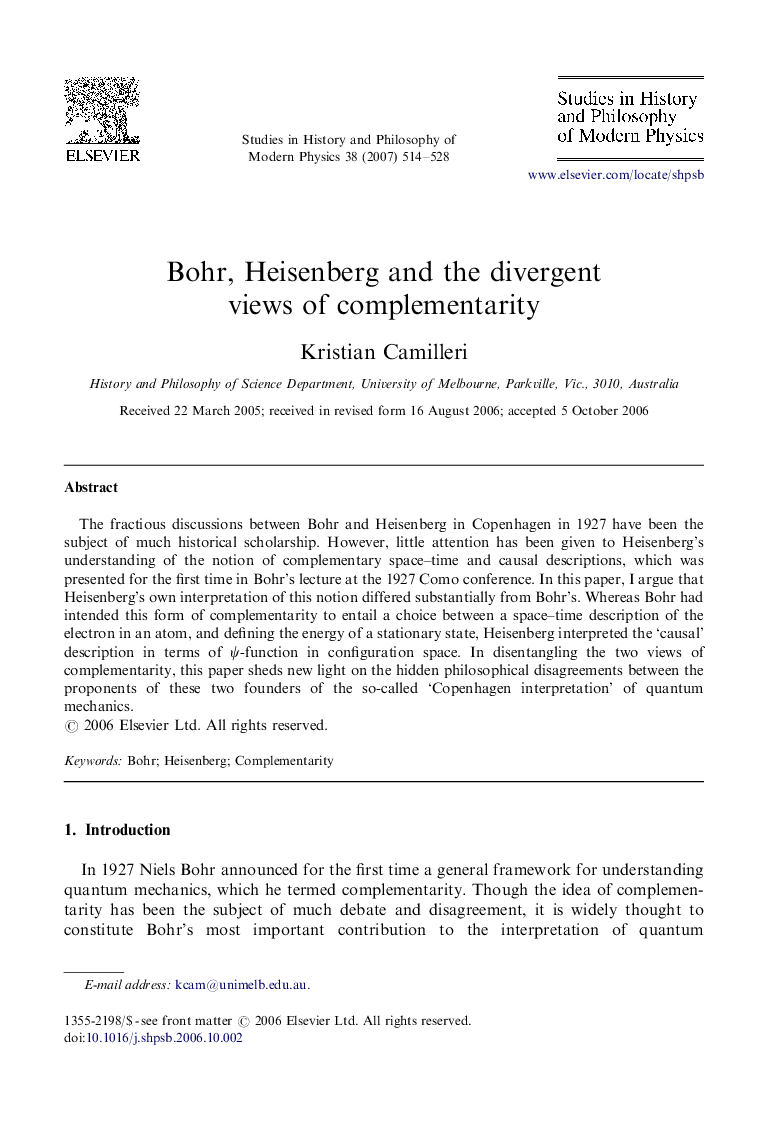| Article ID | Journal | Published Year | Pages | File Type |
|---|---|---|---|---|
| 1161618 | Studies in History and Philosophy of Science Part B: Studies in History and Philosophy of Modern Physics | 2007 | 15 Pages |
The fractious discussions between Bohr and Heisenberg in Copenhagen in 1927 have been the subject of much historical scholarship. However, little attention has been given to Heisenberg's understanding of the notion of complementary space–time and causal descriptions, which was presented for the first time in Bohr's lecture at the 1927 Como conference. In this paper, I argue that Heisenberg's own interpretation of this notion differed substantially from Bohr's. Whereas Bohr had intended this form of complementarity to entail a choice between a space–time description of the electron in an atom, and defining the energy of a stationary state, Heisenberg interpreted the ‘causal’ description in terms of ψψ-function in configuration space. In disentangling the two views of complementarity, this paper sheds new light on the hidden philosophical disagreements between the proponents of these two founders of the so-called ‘Copenhagen interpretation’ of quantum mechanics.
